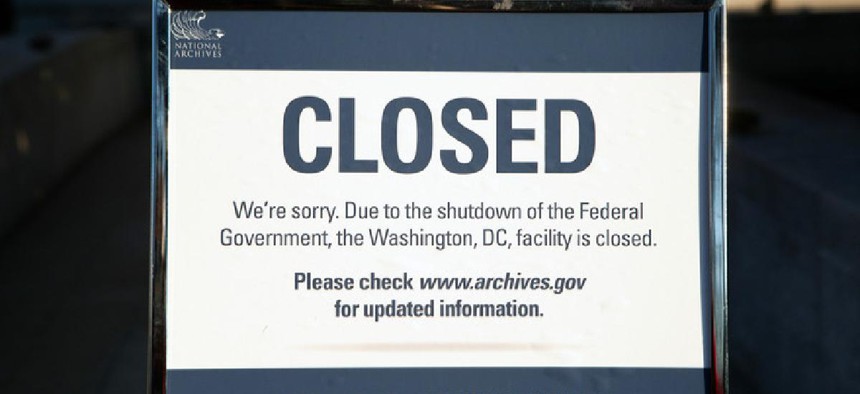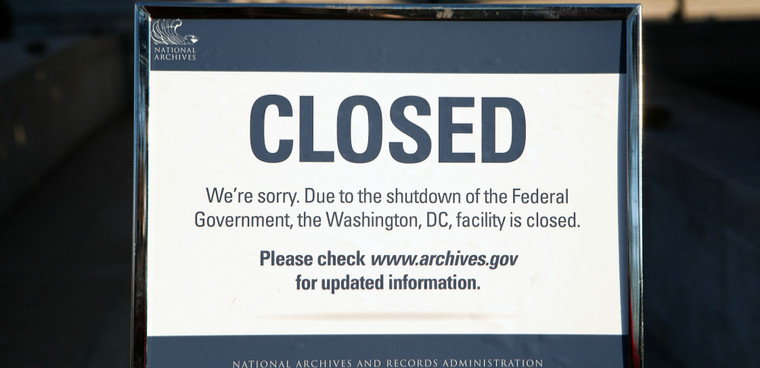Trump threatens yet another shutdown

The government is currently funded by a short-term continuing resolution that expires on midnight on Monday, Dec. 28.

President Donald Trump departed on Air Force One this afternoon to spend Christmas at the resort and club he owns in Florida, after airing his displeasure with a $2.3 trillion government funding package and pandemic relief bill – teeing up a possible shutdown of the federal government.
Trump made his dislike of the legislation, negotiated by his Treasury Secretary Steven Mnuchin, known Tuesday night in a recorded video message complaining about certain items in the budget and of the paucity of the $600 relief checks planned to help Americans suffering because of the economic crisis brought on by the coronavirus pandemic. Trump asked for the amount to be raised to $2,000.
Lawmakers had already left town for the holidays when the announcement was made, although the House and Senate both have plans to return early next week in the event that it proves necessary to override a veto of the National Defense Authorization Act.
The government is currently funded by a short-term continuing resolution that expires on midnight on Dec. 28. That means government workers could face a partial government shutdown on Tuesday, amid a worsening pandemic that is claiming upwards of 3,000 American lives a day, and amid a government-led effort to distribute the limited supply of COVID-19 vaccines to front-line health workers, older Americans and others in high-risk groups.
If there is a lapse in appropriations, it would be the third on Trump's watch, including a 35-day shutdown, the longest in U.S. history.
Most of the shutdown guidance and agency contingency plans in place date back to 2019. However, in recent weeks, the Departments of Homeland Security, State, the National Science Foundation, Labor and the Treasury Department have updated their shutdown plans and procedures.
For example, the Cybersecurity and Infrastructure Security Agency at DHS would retain just 356 of 2,110 employees or 16% of their workforce in the event of a shutdown. That agency is one of several tasked with responding to a massive breach of government systems that occurred under the SolarWinds hack.
The Department of Health and Human Services updated its contingency staffing plan in late September, ahead of the close of fiscal year 2020. The agency, which includes CDC among its many components, hopes to maintain COVID-19 response at current levels even amid a shutdown.
"HHS will use the full extent of the authority under the Antideficiency Act (ADA) to maintain existing HHS activities, including COVID-19 response, research and vaccine and therapeutic development," the document states. "HHS will continue any COVID-19 activities supported by multiyear funding provided in the emergency supplemental appropriations bills."
In the event of a shutdown, CDC will have to do its share of that work with 62% of its employees furloughed – that's 8,295 furloughs out of 13,299 staffers, according to the agency's plan.
Additionally, this would be the first lapse in appropriations under which furloughed federal employees would be guaranteed back pay for time missed under legislation included in the bill that ended the 35-day shutdown in the winter of 2018-2019.
"Just when you think you have seen it all, last night, the President said that he would possibly veto the bicameral agreement negotiated between Republicans and Democrats," House Speaker Nancy Pelosi (D-Calif.) said in a "Dear Colleague" letter sent Tuesday morning. "He said he would do so, unless the economic impact payments were increased to $2,000."
Pelosi offered to pass a standalone bill to increase the payments by unanimous consent, and asked Trump to use his influence with Minority Leader Kevin McCarthy (R-Calif.) to agree to support such a motion.
This appears unlikely. Even if the House were able to quickly pass a standalone measure under suspension of the rules (which requires a supermajority and can be done quickly), the measure would have to pass under unanimous consent in the Republican-controlled Senate to avoid lengthy debate procedures.
It's also not clear whether a presidential veto of the combination appropriations omnibus and the COVID relief legislation could be overridden by Congress, although the legislation passed by overwhelming majorities in the House and the Senate.
"The entire country knows that it is urgent for the President to sign this bill, both to provide the coronavirus relief and to keep government open," Pelosi wrote, adding, "Let us pray!"
NEXT STORY: Union lawsuit looks to block Schedule F



